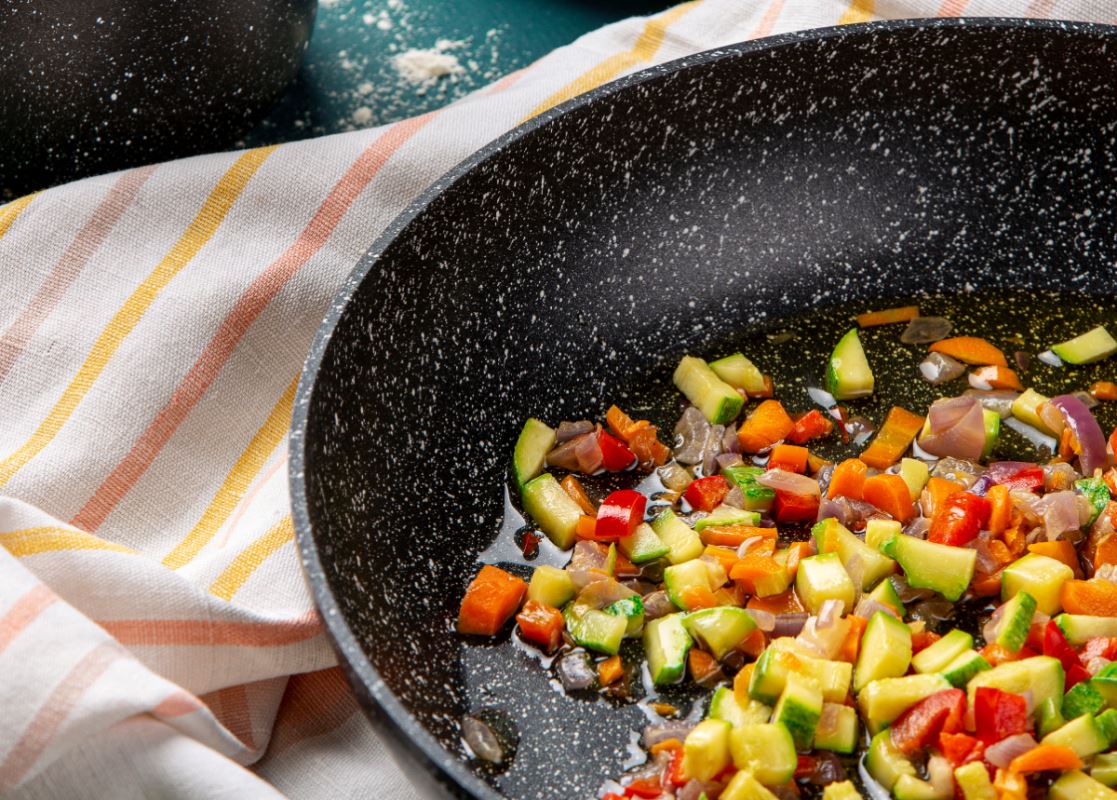
This story may sound familiar... Once upon a time there was a man who tried to cook a boneless chicken breast. He put his pan in the eye, added some oil and finally the chicken with the spices hoping for the best. After a while, the chicken began to…boil in its own juices, although this man had no intention(!) of boiling his chicken, instead he intended to brown it! It wasn't long before the man tried to flip the chicken breast over, but it got stuck, so he quickly put it back. Now it looked like the part of the chicken that stuck to the pan was brown but the rest of the chicken was pale and not very well cooked. Although the chicken looked delicious and crispy, cutting into the first piece he was saddened to discover that it was raw and rosy inside…. What will he eat now?
If you are familiar with this story, it means that you too have tried unsuccessfully to fry, with food sticking to the pan! Are you wondering "how do I fry without my food sticking?" we have the solution for you!
Preheating the pan!
Properly preheating the pan will prevent your food from sticking, at least most of the time. When a pan is properly preheated, the moisture in the food is drawn away from the surface of the pan and the fat you add to the pan for your food does its job. A lukewarm pan will draw moisture into the pan and the moisture will cause the food to stick. There are certain foods that are more delicate and likely to stick, such as a lightly breaded schnitzel, while crepes, an omelet or a duck breast can benefit from a non-stick pan.
Learning how to properly preheat your pan is the first step to learning how to cook and yet most people don't know how to do it!
This is just the first step to cooking a chicken…
Next, you need to figure out what pan to use? Read here to find out the ideal pan for your needs.
Choose a non-stick pan and successfully cook any recipe. Learn more in the article "Guide for Non-Stick Cookware".
"How do I know if my pan is preheated properly?"
Not holding your hand over the pan or pouring water into it or adding oil and looking at it are not the only solutions. If you want to know exactly how hot your pan is, then measure its temperature using a surface thermometer. Make your pan… an oven and discover its temperature consistently!
Surface thermometers are not very expensive and are relatively simple to use. Whether you use a surface thermometer or not, you need to heat your pan thoroughly before adding anything to it. Do not add oil, butter, meat or anything else until this pan is properly heated. This should take 5 to 8 minutes. You have to give this pan time to heat up and it takes some time and practice to get the temperature just right. With experience, you can do this more quickly once you get to know your eyes and your cookware and of course how they react to each other.
These are the recommended temperatures for your cooktop…
o 100-120 degrees - Low temperature
o 140-160 degrees - Medium temperature
o 180-200 degrees - High temperature
Once you've reached your desired temperature, this pan will just sit there and…wait like a good little kid until you're ready to cook something. When you are ready to cook, add your oil to the pan and immediately add the food, no need to heat the oil. In fact, when using high heat don't heat the oil, just remove that idea from your thought process. You have to be quick about this at high heat: add the fat, turn, grab the steak and put it in the pan. You may need to swirl the fat to cover the pan, but that's about it. When your pan gets really hot, the fat will burn quickly, so again, don't worry about the heat.
Tips for a proper frying!
• Do not pierce the fried food
• Keep food dry
• Do not cover the fried food
• After frying, place the food on absorbent paper
• Don't wait a moment, serve the food immediately
Discover every type of cookware such as pots, pans, grills and oven pans as well as the necessary tools for the kitchen and get ready to create!